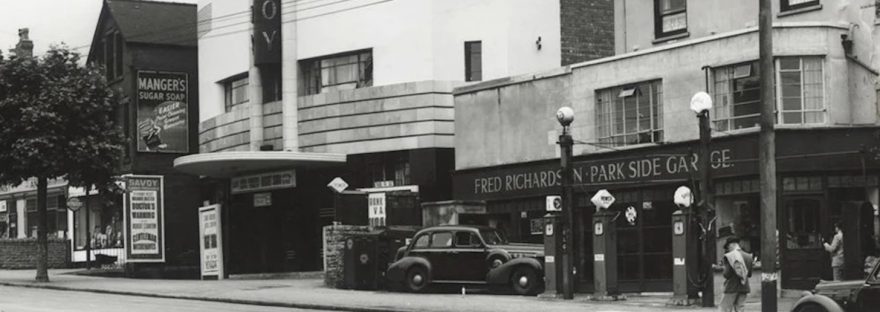On 7 November 1935, Nottingham’s Art Deco Savoy Cinema opened to the public.
The Savoy Cinema, on Derby Road, Lenton, opened 90 years ago on 7 November 1935. It is the only surviving pre-WW2 cinema in Nottingham, although it has been much altered, it still has some original features surviving.
The cinema is celebrating this anniversary with newly refurbished seating and special prizes for cinema-goers, but what of the building’s beginnings and its architect?
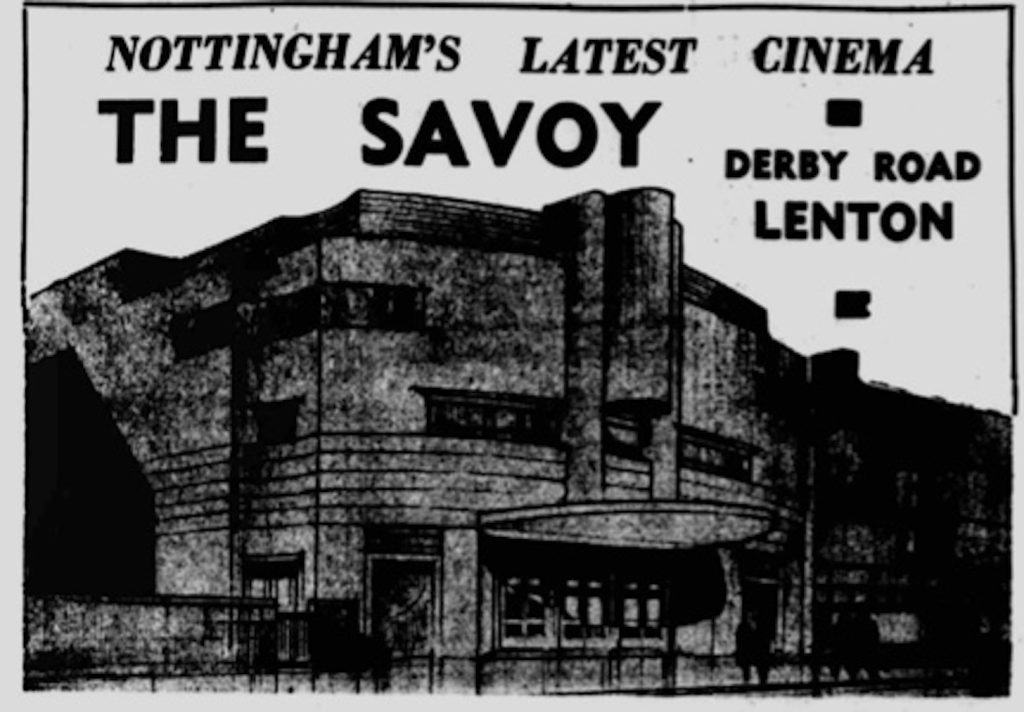
It was designed by architect Reginald W. Cooper (1902-1969), who had been an assistant to another Nottingham architect, Alfred J. Thraves, also known for his cinema designs and for his work on Nottingham’s Palais de Danse. (As covered on my Deco in the Details tour).
Reginald William Gaze Cooper was born in Long Eaton in 1902. By the age of 19, he was working as an architect. In January 1935, when plans for the Savoy were announced, his office was in Queen’s Chambers on King Street (a building familiar to anyone who has been on my Watson Fothergill Walk tour, as it was designed by Fothergill and completed in 1897).
The new Savoy cinema was described at its inception as being in the “Austrian style, with a frontage carried out in cream with stainless steel columns used to obtain decorative effect.” (Nottingham Journal, Wednesday 16 January 1935).
On the Derby Road trolley bus route, The Savoy was built to cater for the suburban populations of Lenton, Radford, and Wollaton Park. The “new picture house embodies every modern idea in cinema design”. It was planned to “provide accommodation for some 1,200 patrons”.
The frontage to Derby road was “striking in cream Cullamix (render) and green and black glass.”

In the Pilkington’s Vitrolite Specification catalogue, (pictured above) the canopy over the door of the cinema is highlighted. It describes black and green Agate Vitrolite bands with columns of green Agate and black. Vitrolite was a super-strength glass made by heating chemical compounds to extreme temperatures, it was often used on Art Deco buildings.
Inside the elliptical-shaped foyer, there was a central pay box and a chocolate counter. The flooring was made from Dunlop Rubber, as seen in this advertisement from The Architect’s Journal in 1947.
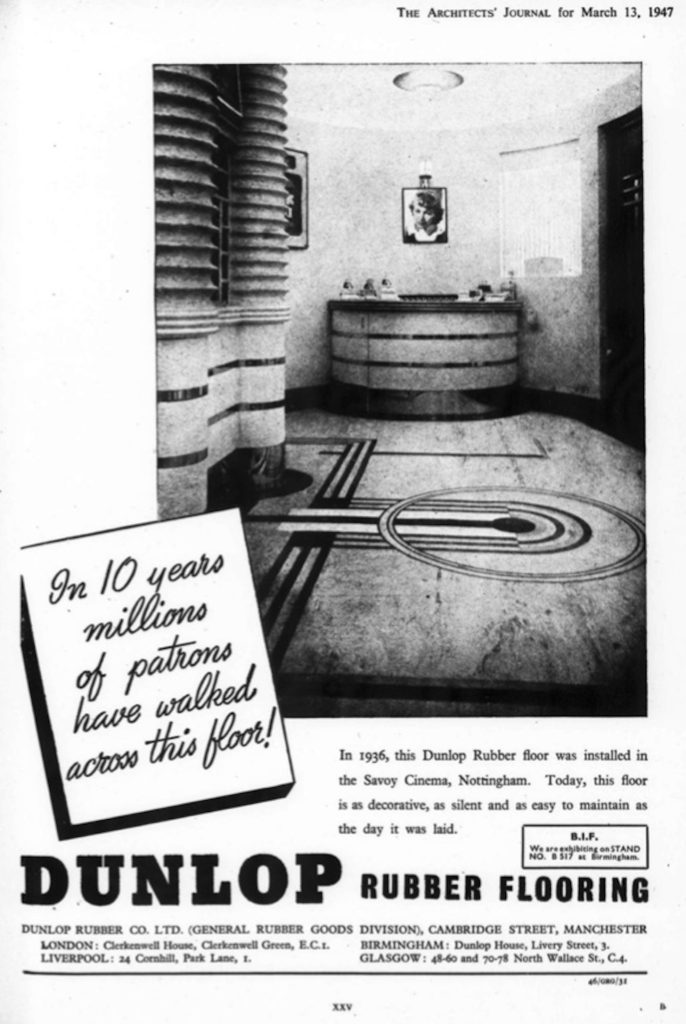
The Nottingham Journal described an interior colour scheme of pale green, deep cream, and silver. “No cinema in the city possesses such a perfect screen.” Seating, carpets, and curtains were all supplied by Griffin & Spalding (the local department store, eventually to become Debenhams).
The opening film was Flirtation Walk, a musical of 1934 starring Dick Powell and Ruby Keeler.


Here’s crooner Dick Powell singing the title song with some clips from the film…
Reginald W. Cooper was also the architect of many other Nottingham cinema buildings, including The Roxy, Daybrook, The Capitol, Radford (Still standing as a church and worth seeking out), The Ritz-Carlton (in Carlton!), The Adelphi, Bulwell, and The Metropole on Mansfield Road, Sherwood. He was also responsible for the typically Art Deco Ritz cinema in Ilkeston and the Nottingham Stadium Ice Rink.
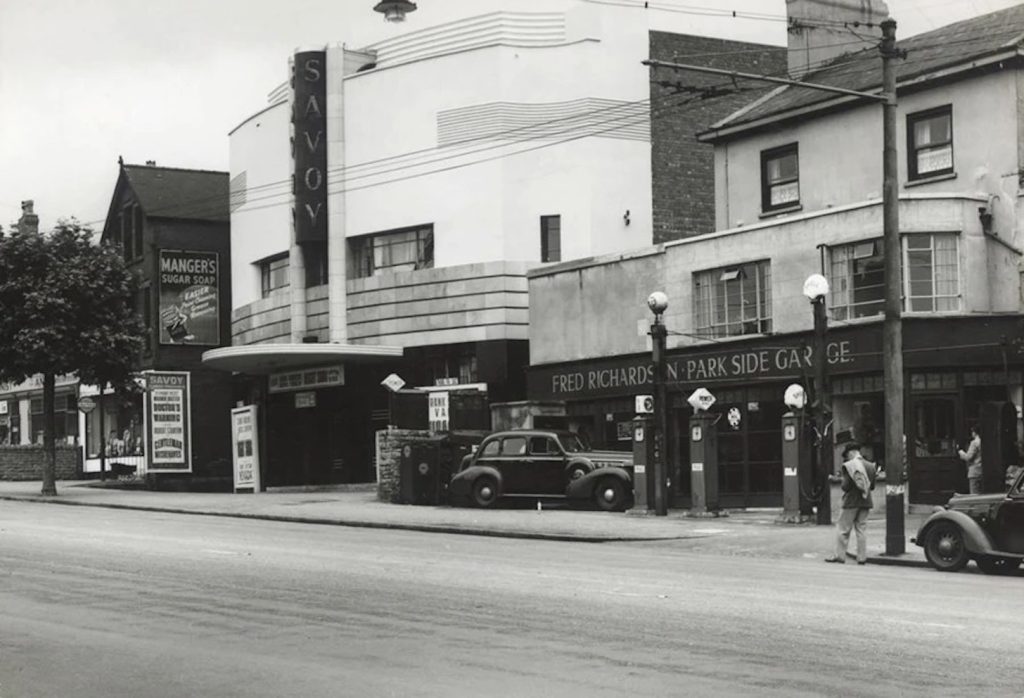

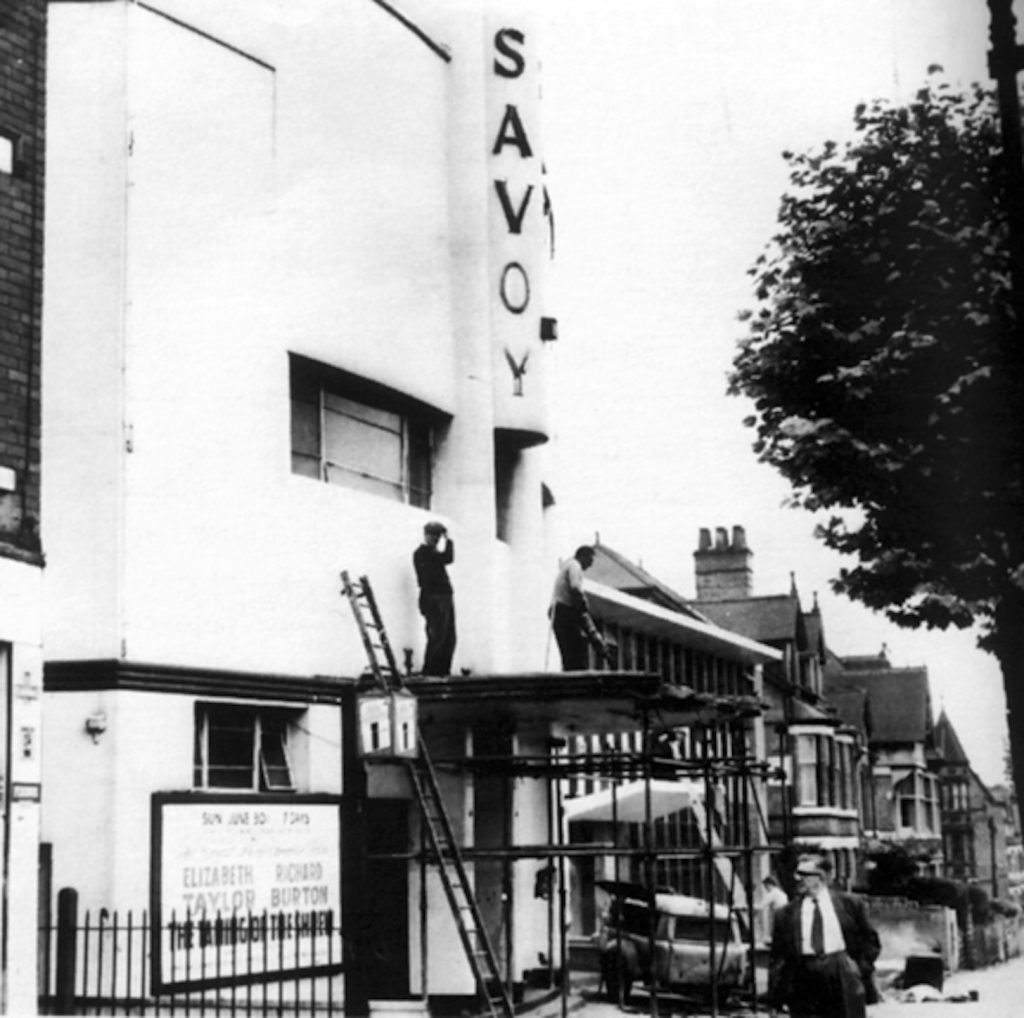
These days, The Savoy has an altered frontage, added in the late 1960s, and the interior has undergone an array of alterations. More about the ongoing history of The Savoy in West Bridgford Wire.
If you’re heading to The Savoy to see the films they’re showing this week – including The Choral and Bugonia – enjoy the movie and remember one of Nottingham’s great Art Deco-era buildings.
For more about Art Deco architecture and the buildings of the 1920s and 1930s, join me for my talk on Nottingham’s Art Deco Pubs, which I’ll be running again on Tuesday, 20th January 2026 at The Vat & Fiddle pub.
NOW SOLD OUT – Make sure you’ve subscribed for announcements of new dates!
Thanks for reading Watson Fothergill Walk – Lucy Brouwer! Subscribe for free to receive new posts and support my work.
